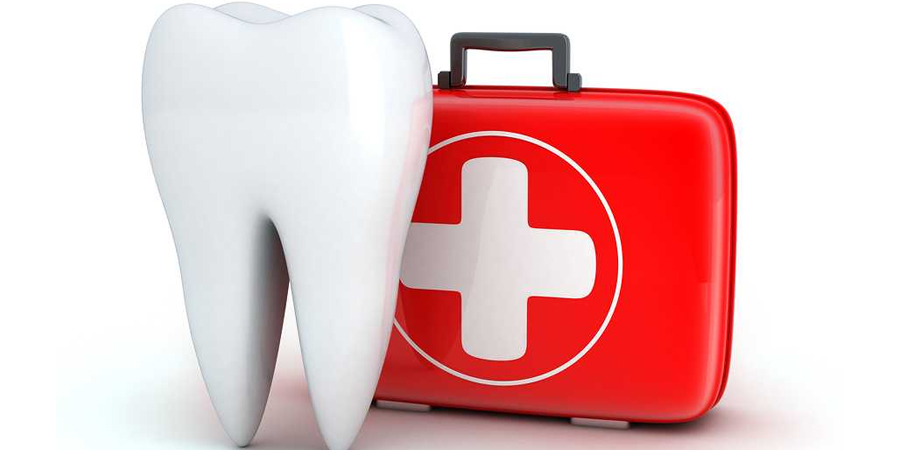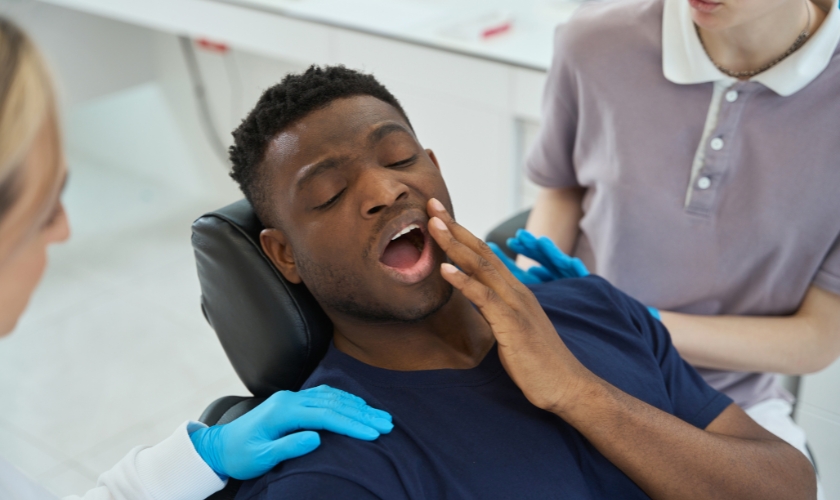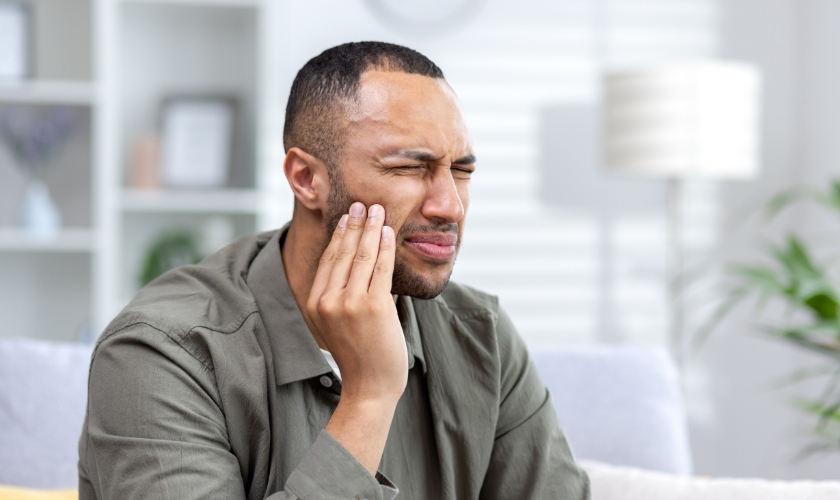
Dental injuries can happen in the blink of an eye. Whether it’s a sports mishap, an accident at home, or a simple fall, knowing what to do immediately can make all the difference. When you’re dealing with a chipped tooth, a knocked-out tooth, or an oral cut, staying calm and acting quickly is crucial to prevent further damage.
That’s where first aid comes in—providing the right care in the first few minutes can help save your tooth and reduce complications.
This guide walks you through essential first-aid steps for common dental injuries. From managing a knocked-out tooth to dealing with a broken crown, we’ll break down the steps you need to follow when disaster strikes. You’ll also learn preventive measures that can reduce the risk of injury and how to recognize when it’s time to see a dentist. Dental emergencies can feel overwhelming, but with the right knowledge, you can respond confidently and effectively.
Let’s dive into these easy-to-follow steps and keep your smile safe!
Common Dental Injuries and Their Causes
Dental injuries are far more common than many realize. A simple accident, a sudden fall, or even an intense sports match can result in a range of injuries to the teeth and gums. The most common injuries include chipped teeth, knocked-out teeth, and cuts to the lips, gums, or tongue. Each of these requires immediate attention to minimize damage and ensure proper healing.
- Chipped Teeth: These can occur from biting down on hard objects or accidents. Even a minor chip can cause discomfort and affect your smile.
- Knocked-Out Teeth: Often caused by sports injuries, falls, or car accidents, a knocked-out tooth requires quick action to prevent permanent loss.
- Oral Lacerations: Cuts to the lips, gums, or tongue are common in accidents. They need to be treated swiftly to avoid infection.
Statistics show that dental injuries affect millions of people each year, with a significant number occurring during sports activities. Knowing the causes and being aware of the risks can help you take preventive steps. Whether you’re playing sports, working, or just going about daily life, knowing how to react can make a huge difference.
What to Do If a Tooth Gets Knocked Out?
The first thing to do when a tooth is knocked out is to stay calm. Time is of the essence, and the actions you take in the first few minutes can significantly impact whether the tooth can be saved. Here’s how to act immediately:
- Locate the Tooth: Find the tooth and pick it up by the crown (the part that’s visible when you smile), not the root.
- Rinse the Tooth: Gently rinse it with clean water to remove dirt. Avoid scrubbing or using soap.
- Preserve the Tooth: If possible, place the tooth back into the socket, holding it in place by gently biting down. If this isn’t feasible, store the tooth in a glass of milk or saltwater to keep it alive.
- Get to a Dentist Quickly: Ideally, you need to see a dentist within 30 minutes of the injury. The sooner the tooth is re-implanted, the better the chances of success. An emergency dentist in Wichita can help you with replantation.
Remember, acting quickly and efficiently can often save your tooth. Don’t delay seeing a dentist to make sure the best steps are taken.
Quick Fixes for a Chipped or Broken Tooth
When it comes to chipped or broken teeth, acting fast is crucial to reduce pain and prevent further damage. Though broken teeth aren’t as alarming as a completely knocked-out tooth, they still require immediate care.
- Save Fragments: If part of the tooth breaks off, try to find and save the fragment. It might be possible for a dentist to reattach it.
- Use a Cold Compress: If there’s swelling, use a cold compress to reduce it and alleviate pain.
- Temporary Solutions: Over-the-counter dental wax or temporary filling material can be used to cover a sharp edge until you see a dentist.
- Visit a Dentist: Even if you manage to relieve the pain and stop bleeding, it’s essential to see a dentist. They can repair or cap the tooth to prevent infection and restore function.
Handling Oral Lacerations and Soft Tissue Injuries
Oral lacerations, including cuts to the lips, gums, or tongue, are common in dental injuries. While these injuries might seem less severe than broken teeth, they still require care to prevent infection and promote healing.
- Control Bleeding: Apply gentle pressure with a clean cloth or gauze to stop the bleeding. If the bleeding doesn’t stop after 10 minutes, seek medical help immediately.
- Clean the Wound: Gently rinse the mouth with warm salt water to cleanse the area and prevent infection.
- Avoid Touching the Injury: Don’t probe the wound with your fingers or objects, as this could introduce bacteria.
- Pain Relief: Over-the-counter pain relievers can help alleviate discomfort. Use ice packs on the outside of the mouth to reduce swelling.
Managing Pain from Dental Injuries
Dental injuries can come with significant pain, but managing it before you get to the dentist is essential. Here’s how to handle the discomfort:
- Ice Packs: Applying an ice pack to the affected area can numb pain and reduce swelling.
- Over-the-counter Medications: Pain relievers like ibuprofen or acetaminophen can help manage pain, but avoid aspirin as it can thin the blood and increase bleeding.
- Saltwater Rinse: A gentle saltwater rinse can reduce pain and help with swelling.
- When to Seek Help: If the pain is intense or doesn’t subside after taking medication or if you experience signs of infection, it’s time to visit your dentist.
Recognizing When to Seek Professional Help
Sometimes, dental injuries require professional intervention, and knowing when to seek help can prevent long-term complications. Here’s when to go to the dentist:
- Severe Pain: See a dentist immediately if the pain from a dental injury is persistent or unbearable. This could indicate damage beyond a simple injury.
- Visible Fractures or Displacement: If the tooth is visibly cracked, broken, or displaced, it’s critical to seek professional treatment.
- Inability to Stop Bleeding: If you can’t control the bleeding after applying pressure, you need to see a dentist or seek medical attention.
- Signs of Infection: Swelling, pus, or fever can signal infection, which requires immediate care.
How to Prepare for a Dental Emergency?
Being ready for a dental emergency is key to handling the situation effectively. Here are steps to help you be prepared:
- Create an Emergency Kit: Include items like clean gauze, salt, a small container for storing a knocked-out tooth, and over-the-counter pain relievers.
- Have Emergency Contacts: Keep a list of your dentist’s office number, the number of an emergency dentist in Wichita, and the nearest hospital.
- Family and Kids’ Preparation: Teach your family members and children basic first aid for dental injuries so they know what to do when an emergency occurs.
Dental emergencies can strike when you least expect them, but being prepared can make all the difference. By understanding the proper first aid techniques, you can prevent further damage and ensure a better outcome. Whether you’re dealing with a knocked-out tooth, a broken crown, or a cut to your gums, taking swift action is key. Remember, knowing what to do before reaching the dentist can save your smile and your peace of mind. Be prepared, stay calm, and act fast!



